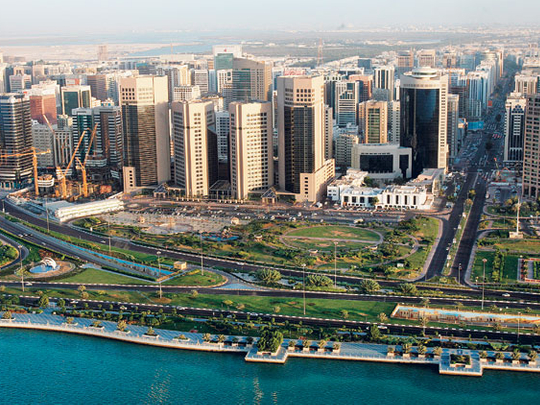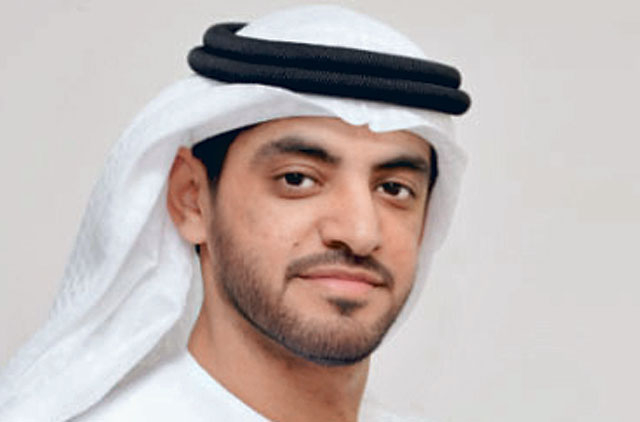
Abu Dhabi: More than 20,000 new housing units will be added to Abu Dhabi's residential landscape through 2011, a top government official told Gulf News.
They will be in addition to as many as 30 public parks and six shopping malls that will help protect the growing population of the UAE capital from rising rents and house prices.
"Rent prices are already falling and becoming more or less reasonable. By summer next year, we will be in a much better position. For instance, 9,000 residential units will be added to the market by the end of 2010, out of which 3,500 residential units in Marina Square will be ready two months from now. There also be another 1,000 residents coming up in Raha Beach," Falah Al Ahbabi, general manager of the Abu Dhabi Urban Planning Council (UPC), told Gulf News, in an exclusive interview.
UPC was created by an Emiri Decree in 2007. It is the agency responsible for the future of Abu Dhabi's urban environments, and the authority behind the visionary Plan Abu Dhabi 2030. The 2030 plan for Abu Dhabi is designed to help the city respond to current and future development needs, establish a planning culture, and introduce strong guiding principles for new development. Al Ahbabi goes into details about the UPC's mandate. Excerpts:
Gulf News: What does the Abu Dhabi government want to achieve through the UPC? Can you touch on the strategic role of the UPC?
Falah Al Ahbabi: We have to put one master plan that we're dealing with in the entire emirate. At Cityscape we will announce the master plan 2030 in Abu Dhabi, Al Ain and the Western Region, which is already complete. There's no room for speculation, and we haven't missed out on any regulations.
It took us nine months to develop a plan for Abu Dhabi's urban growth, eight months for Al Ain, and another eight months for the Western Region.
As for UPC's role, we have four arms of development. Real estate planning and policies; cater and develop analysis and review for land densities, transportation, social requirements; the capital district project which will consist of 5,000 hectares that will host federal and local government entities, embassies, blocks for Emirati residents. It will be a whole city; not to mention of course the Estidama.
What's the mandate for Estidama?
Estidama in Arabic means sustainability. [It's] an initiative developed by us at UPC to achieve the late Shaikh Zayed Bin Sulan Al Nahyan's dream. Estidama is an aspiration, a manifestation of visionary governance that puts emphasis on carefully and responsibly managed development.
What does the Capital District project envisage?
The capital district is a key project of plan Abu Dhabi 2030 and a monumental planning initiative developed by the UPC.
Capital District will be located between Khalifa A and B, and is designed to manage the development of the new city through a long-term vision.
UPC is in the process of hiring detailed engineers for the project, and already hired project managers from Aecom.
We are currently building its roads and electricity, and will be done with phase one in two years.
Phase One will include embassies, the federal government, a sports city, Zayed University and Khalifa University, as well as residents for Emiratis. We put phase One for bids a few weeks ago.
Phases two to five will be finalised in the next five years, and residents will start to witness a medical campus, biomedical research facilities, and an extensive public transit network that will provide a focus for high density development.
What sort of community facilities can be expected in the next few years in Abu Dhabi?
A lot! There will be two malls in Khalifa A 30,000 to 40,000 square metres; one mall in Khalifa B, one in Baniyas 100,000 square metres; one in Mohammad Bin Zayed, one in Yas Island — 350,000 square metres, which is as big as Dubai Mall, and two in Shahama — 75,000 square metres.
In the next two years we will witness Shahama malls. Yas Mall will also be open in two years, Khalifa A and B malls in three years, and Mohammad Bin Zayed in a year and a half. We will also be opening 30 parks in Shahama and Bahia, keeping sustainability in mind, by preserving water and energy. Water is precious and is the main issue we are concerned about.
We will introduce 20 to 25 parks in Khalifa city, over 40 parks in the Capital District, around 15 parks in Mohammad Bin Zayed. Each park will consist of activities and games for children. We might even place animals In some of the parks.
We will also be renovating and revisiting strategies in existing parks based on today's requirements, such as the Khalidiya park, Mushref park, Al Bateen park. We have to make sure all parks consist of sustainable materials, irrigation and landscaping is up to date, and playgrounds/activities for children are added. We want to attract families to spend more time in parks.
There are seven parks now under implementation; in Phase Two, we will open another five parks.
Additionally, we're working with the sports council to add sports facilities that will include soccer and volleyball pitches and basketball courts. Right now, we [are] building five sports pitches across the city, due to open end of this year. Phase Two will introduce another 15 sports facilities.
How much of the Abu Dhabi 2030 plan is complete from an infrastructure as well as cost perspective?
We developed the Reem island infrastructure in September 2007, and now it's 70 to 80 per cent complete. Saadiyat island infrastructure is 60 to 70 per cent complete; Sowwah Island is 60 to 70 per cent complete; Masdar city is 50 per cent complete, Yas Island is 80 to 90 per cent complete; Hydra Village is 60 to 70 per cent complete, Manazel and Raha Garden are almost complete, and we're moving forward in the Capital District.
Prices vary per square metre and change all the time, so there's no way I can give you an exact budget for the Abu Dhabi 2030 plan.
Will the residential expansion process help ease the high cost of rents that are currently a burden for Abu Dhabi residents?
Rent prices are already falling and becoming more or less reasonable. By summer next year, we will be in a much better position. For instance, 9,000 residential units will be added to the market by the end of 2010, out of which 3,500 residential units in Marina Square will be ready in two months. There also be another 1,000 residences coming up in Raha Beach.
In 2011, we will add another 10,000 residential units. So by next year, we should witness 20,000 residential units. With all these projects, market supply will increase and will keep prices reasonable.
How does the UPC propose to act as an agent of change that will improve the overall experience of residing in and visiting Abu Dhabi in 2030. How different will Abu Dhabi look in 2030?
In five to ten years Reem Island will accommodate 200,000 people, and will be the financial hub in Abu Dhabi. The UAE stock exchange for instance will relocate to Reem Island.
The Saadiyat Island will consist of the Zayed Museum, the louvre, the Guggenheim museum, as well as the Zaha Hadid Abu Dhabi Performing Arts Centre.
Not to mention the Yas Circuit in Yas Island, and the ability to witness the most sustainable city in the UAE in Masdar, as well as the Capital District of course, where you can witness development.
Is it true that you're targeting uptown Abu Dhabi as a business hub?
There's overcapacity in town, so we want to provide more space for people. Structurally we want to fix our shortage of residential and office space to cater for the population growth.
When will people start to witness change in Abu Dhabi's lifestyle?
The new Corniche beach is an example of lifestyle enhancement, and is a huge success. We planned and designed it and are keeping an eye on Phase One. Phase Two is coming up soon, where we're adding an extra kilometre of beach.
Parking is a major issue in Abu Dhabi. Any comments?
As you know we introduced paid parking through the Department of Tourism, and are in the process of tendering four structured parking lots that will accommodate 500 cars [each].
We plan to introduce a total of 17 structured parking projects that will accommodate an extra 9,000 cars. Not to mention that Salam Street will be open by the end of the year, which will help reduce traffic congestion.
How many developers does UPC deal with, and have you witnessed a decline in projects coming from their end due to the economic crunch? How has this affected the UPC?
We haven't witnessed a decline, but a change in schedules. Instead of finalising a project in five years, they would build it in seven or eight years. Projects were simply delayed.
We have hundreds of small developers that we deal with and major ones such as Al Dar, Tomouh, Sorouh, Al Reem, Mubadala, Al Qudra, ICT, and TDIC.
The economic crisis was actually beneficial for Abu Dhabi because it encouraged everyone to consider the projects' feasibility and financial background.
What would be the total estimated investment in Abu Dhabi city by the government and private sector from 2010 to 2030?
It's huge! I can't possibly give you that figure, as I will be missing out on a lot. Not to mention that there are other projects that still didn't come to us. Besides, I don't invest, I'm a planner and a regulator.
Will the Abu Dhabi Metro be linked to the Union Railway? What is the game plan for fast-track Dubai-Abu Dhabi rail connectivity?
The Abu Dhabi Metro will be linked to the Union Railway. As for the game plan, that is still under study.












